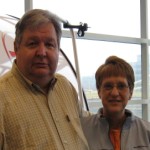Having a good first aid kit is necessary, but most importantly go get trained and certified in first aid and CPR. Go to the American Red Cross, they offer good classes in both. The ARC CPR class is excellent. The ARC Community First Aid class is ok, but they generally assumed you are within an area you can call for rescue/EMTs and that isn't always the case. More intensive first aid classes are available in most places.
Personally I am certified in first aid for my mountain climbing activities, and the Mountaineering Oriented First Aid class was one such intensive first aid class. I highly recommend getting trained.
Dirk
Medicine cabinet or first aid on the road
32 posts
• Page 2 of 3 • 1, 2, 3
Used to do a lot of boating--and like camping, YOU are the closest medical center when you get hurt.
Buy a cheap tackle box, tool box, and go thru the drug store or health center at your local k,wal, or home mart. Fill the cart with what you think you will need. Trama pads are called Maxi-pads in the stores, no tie straps tho. Get a tooth kit, ambesol, eyewash kit,etc. Crazy glue for skin stitches, and then all your "Normal" stuff.
If you need it, no store is close enough, and if your in the boonies, when you get to the store it might not be open.
Had a lot of fun boating, with 2 girls, and had bumps, cuts, stings, bites, and burns, but nothing we couldn't handle, and nothing that stopped the weekend short. Lucky I guess, but ifin you are prepared for anything, then it is less of an emergency. That is what makes the time camping fun.
Les
Buy a cheap tackle box, tool box, and go thru the drug store or health center at your local k,wal, or home mart. Fill the cart with what you think you will need. Trama pads are called Maxi-pads in the stores, no tie straps tho. Get a tooth kit, ambesol, eyewash kit,etc. Crazy glue for skin stitches, and then all your "Normal" stuff.
If you need it, no store is close enough, and if your in the boonies, when you get to the store it might not be open.
Had a lot of fun boating, with 2 girls, and had bumps, cuts, stings, bites, and burns, but nothing we couldn't handle, and nothing that stopped the weekend short. Lucky I guess, but ifin you are prepared for anything, then it is less of an emergency. That is what makes the time camping fun.
Les
Music is like chocolate.......you can't really enjoy it unless the rappers are gone.
-

Lesbest - The 300 Club
- Posts: 367
- Images: 7
- Joined: Sat Dec 31, 2005 9:10 pm
- Location: Girard, Oh.





 Are you gonna share with the victim?
Are you gonna share with the victim? 
